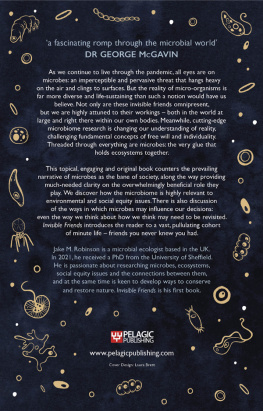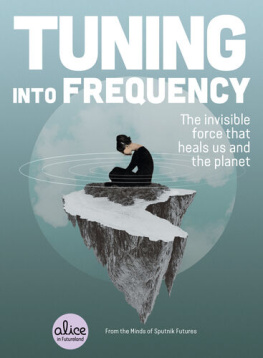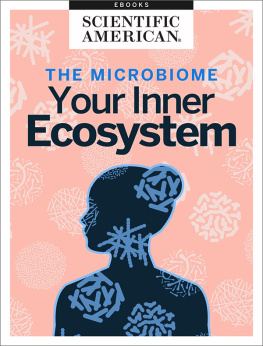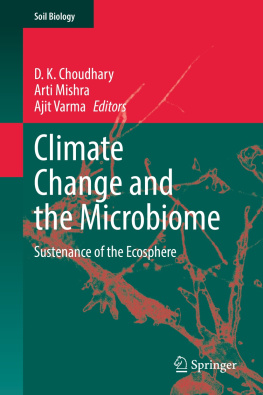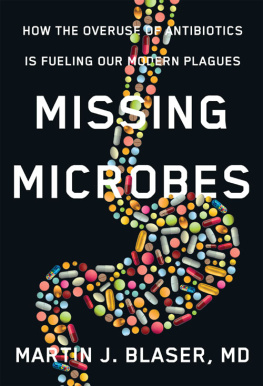Harry J. Flint - Why Gut Microbes Matter: Understanding Our Microbiome
Here you can read online Harry J. Flint - Why Gut Microbes Matter: Understanding Our Microbiome full text of the book (entire story) in english for free. Download pdf and epub, get meaning, cover and reviews about this ebook. year: 2020, publisher: Springer Nature, genre: Romance novel. Description of the work, (preface) as well as reviews are available. Best literature library LitArk.com created for fans of good reading and offers a wide selection of genres:
Romance novel
Science fiction
Adventure
Detective
Science
History
Home and family
Prose
Art
Politics
Computer
Non-fiction
Religion
Business
Children
Humor
Choose a favorite category and find really read worthwhile books. Enjoy immersion in the world of imagination, feel the emotions of the characters or learn something new for yourself, make an fascinating discovery.
- Book:Why Gut Microbes Matter: Understanding Our Microbiome
- Author:
- Publisher:Springer Nature
- Genre:
- Year:2020
- Rating:5 / 5
- Favourites:Add to favourites
- Your mark:
- 100
- 1
- 2
- 3
- 4
- 5
Why Gut Microbes Matter: Understanding Our Microbiome: summary, description and annotation
We offer to read an annotation, description, summary or preface (depends on what the author of the book "Why Gut Microbes Matter: Understanding Our Microbiome" wrote himself). If you haven't found the necessary information about the book — write in the comments, we will try to find it.
Why Gut Microbes Matter: Understanding Our Microbiome — read online for free the complete book (whole text) full work
Below is the text of the book, divided by pages. System saving the place of the last page read, allows you to conveniently read the book "Why Gut Microbes Matter: Understanding Our Microbiome" online for free, without having to search again every time where you left off. Put a bookmark, and you can go to the page where you finished reading at any time.
Font size:
Interval:
Bookmark:

This interdisciplinary series brings together the most essential and captivating topics in the life sciences. They range from the plant sciences to zoology, from the microbiome to macrobiome, and from basic biology to biotechnology. The series not only highlights fascinating research; it also discusses major challenges associated with the life sciences and related disciplines and outlines future research directions. Individual volumes provide in-depth information, are richly illustrated with photographs, illustrations, and maps, and feature suggestions for further reading or glossaries where appropriate.
Interested researchers in all areas of the life sciences, as well as biology enthusiasts, will find the series interdisciplinary focus and highly readable volumes especially appealing.
More information about this series at http://www.springer.com/series/15408

nobeastsofierce / stock.adobe.com
This Springer imprint is published by the registered company Springer Nature Switzerland AG.
The registered company address is: Gewerbestrasse 11, 6330 Cham, Switzerland
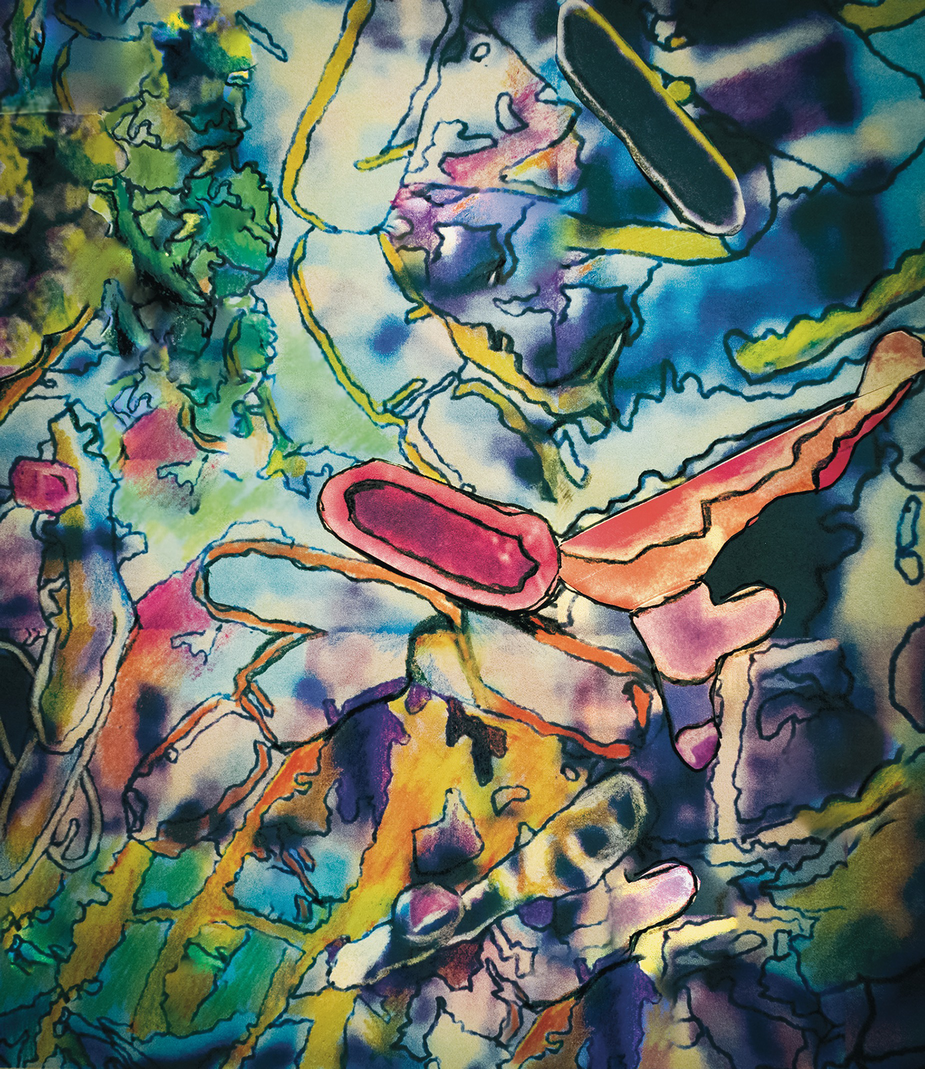
Painting by Rowan M. Flint
In memory of my father Harry Edgar Flint (19241988).
Until recently, the micro-organisms that live in our intestines and on other body sites were largely unknown and indeed were of almost no interest to the majority of people, including most scientists. The only real exceptions were organisms shown to cause diseases such as diarrhoea. The past 15 years, however, have seen an explosion of research into what has been called the human microbiome and especially the micro-organisms that reside in our gut (the gut microbiota ). As soon as this research started to suggest links between previously unconsidered micro-organisms and human health, its importance was reflected in the media and began to be appreciated by the general public. Claims that our microbiomeis linked to the prevention or causation of obesity , diabetes, cancer, bowel disease, allergyand autoimmunity, resistance to infection and even mental health have now become commonplace.
The explanation for this sudden explosion in microbiome research is technological. Just as the invention of the microscope was fundamental in creating the field of microbiology, new techniques for the rapid sequencing of nucleic acids in the twenty-first century have revolutionised the study of microbial communities, bypassing the need to grow (culture) individual organisms in the laboratory. This advance quickly attracted a major wave of new research funding to what was now seen as a hot topic. Before this, it had been left to a small cadre of dedicated microbiologists and physiologists to study the gut microbiota and its effects on the host. As we will see, the major inhabitants of the gut microbiota are anaerobes that do not grow in the presence of air. This makes them inconvenient to study through culturing, and young microbiologists were easily put off working on anaerobes if they wanted to have a successful career (although on a personal note I am pleased to say that this did not deter me!). There are, however, some very important insights from this type of work that are in danger of being overlooked in the headlong rush towards sequence-based analyses.
This book aims to present a concise and balanced overview of what we currently understand about our gut microbiota . In doing so, it attempts to relate advances gained from the latest high-throughput sequence-based research to understanding that comes from other approaches, especially culture-based microbiology and systems modelling. This book sets out to explain each topic as far as possible from first principles. This is intended to make it accessible to non-specialist readers who have some basic background in science, but who might not have formal training in microbiology or biology. A Glossary is included at the end that may prove helpful. Selected references are included for those who wish to read further, although these represent a very small subset of the thousands of papers being published annually in this field.
Most of all, I hope that this book manages to communicate some of the excitement, fascination and promise of this rapidly developing research field. Some of this is conveyed in the artistic frontispiece by my daughter Rowan, inspired by the content of this book.
I would like to thank my colleagues Petra Louis and Sylvia Duncan for taking the time to read and comment on these chapters while still in draft form. Their input was extremely valuable and certainly helped to improve the content. Thanks also to Petra for designing Fig. 4.1, to Alan Walker for allowing me to show the FISH micrographs from his PhD thesis in Fig. 5.2 and to Helen Kettle for the modelling in Fig. 11.2. I am very grateful to another ex-colleague, Tim King, for his permission to show the excellent electron micrograph in Fig. 3.1. Very special thanks are due to my artist wife Irene who produced the diagrams of gut anatomy for Figs. 2.2 and 5.1 and to my artist daughter Rowan for the frontispiece. I would also like to take this opportunity to thank all of those who worked with me in the Microbiology/Gut Health group of the Rowett Institute in the University of Aberdeen over the years. Our research discussions and shared problem-solving undoubtedly helped to shape many aspects of this book, and I would like to acknowledge the Scottish Government (RESAS) for supporting our research. I must also pay tribute to my late PhD supervisor and mentor, Henrik Kacser, whose insistence on questioning and enquiry left an indelible impression on my approach to science.
Font size:
Interval:
Bookmark:
Similar books «Why Gut Microbes Matter: Understanding Our Microbiome»
Look at similar books to Why Gut Microbes Matter: Understanding Our Microbiome. We have selected literature similar in name and meaning in the hope of providing readers with more options to find new, interesting, not yet read works.
Discussion, reviews of the book Why Gut Microbes Matter: Understanding Our Microbiome and just readers' own opinions. Leave your comments, write what you think about the work, its meaning or the main characters. Specify what exactly you liked and what you didn't like, and why you think so.


